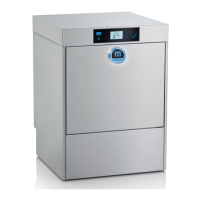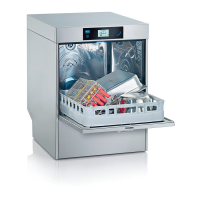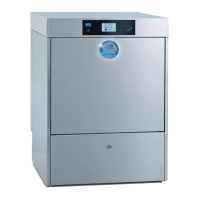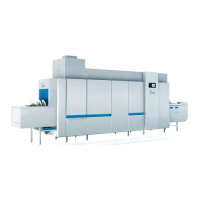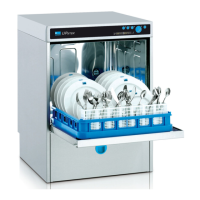Operating instructions Glass-, utensil- and dishwasher
M-iClean U
9763258 21 / 72
Design and construction subject to change without prior notice!
5.6 Dosing equipment
Reduced durability of dosing units and other dishwasher components
The use of inappropriate detergent and rinse aid can corrode the dosing units and
other machine components.
• If necessary: Consult with MEIKO and the detergent supplier.
Detergent dosing
The detergent dosing unit is designed to automatically add liquid alkaline deter-
gent to the dishwashing machine (the manual addition of detergent products is not
recommended).
The detergent is transported from the storage container to the wash tank via a
hose conduit. The dosing equipment is self-priming. Dosing occurs during each fill-
ing cycle and at the beginning of each program cycle via timer control.
Normally, a dosing of approx. 2 ml of detergent per litre of tank water is the correct
concentration. This may, however, be increased up to 5 ml/l or reduced to 1 ml/l
depending on the water quality, the type of items being washed and how dirty they
are.
Rinse aid dosing
The rinse aid dosing unit is designed to automatically admix liquid final rinse aid
into the fresh water.
The rinse aid is pumped out of the storage container into the fresh water supply
line through a hose conduit. The dosing equipment is self-priming. Dosing takes
place during each filling cycle.
The correct dosage leads to an even water film.
In case of overdosing, bubbles and stripes will form, which means that the dosage
needs to be reduced.
In case of under-dosing, water drops remain on the wash which means that the
dosage needs to be increased.
Dosing equipment lifetime
The lifetime of dosing equipment and its components depends on the chemicals
used.
The peristaltic tubes (1) are wear and tear parts whose longevity depends heavily on
the chemicals used and on the duration of use. If required these must be replaced.

